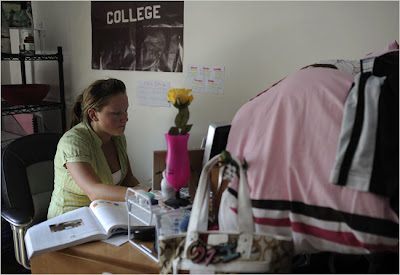
The New York Times - Paris — Is Europe no longer an economic museum?
In recent years, as Wall Street boomed, Americans often dismissed Europe as a place for languorous meals and vacations, not economic innovation.
London remained a financial hub, of course, but it was often treated dismissively — as a flashy aberration pumped up by petrodollars from Russia and the Gulf, an exception to the otherwise somnolent Continent.
That kind of thinking is now under challenge, because during the last 10 days Europeans have proved more nimble than Americans at getting to the root of the global financial crisis, whatever they may have lacked as innovators.
After initially dithering, Europe’s leaders came up with a financial bailout plan that has now set the pace for Washington, not the other way around, as had been customary for decades.
That was clear when the Treasury Department decided to depart from its own initial bailout plan — the one approved by Congress earlier this month — and invest up to $250 billion directly in the nation’s banks. The nuts and bolts of that approach had been laid out days earlier by European leaders as they tried to save their own financial system.
And that outcome left Gordon Brown, the British prime minister, and Nicolas Sarkozy, the French president, in something of a commanding position to claim the title of wise men. They are now speaking of creating a Bretton Woods agreement for the 21st century, while the leaders of the country that fathered the postwar financial system worked out at Bretton Woods, N.H., prefer to stay away from such big-picture talk.
In London, where Britain’s willingness to follow the United States into Iraq five years ago still evokes outrage, officials have been especially quick to point out they didn’t follow Washington’s lead this time.
“There’s no doubt that it was a British plan that was copied by the U.S.,” said Leon Brittan, who served as Home Secretary under Margaret Thatcher and was a top official at the European Commission. “It shows that the American conception of Europe as an economic basket case is outmoded and wrong.”
“Europe showed the capacity to respond to a crisis more quickly than the U.S.,” he added. “The U.S. went through agonies to come up with a plan.”http://www.nytimes.com/2008/10/19/weekinreview/19schwartz.html?partner=permalink&exprod=permalink


